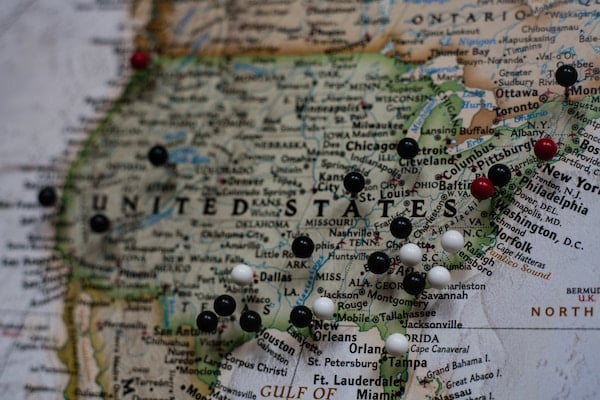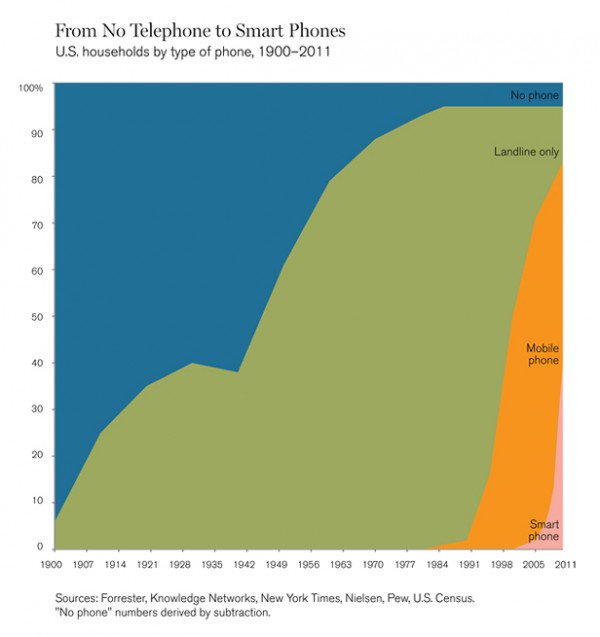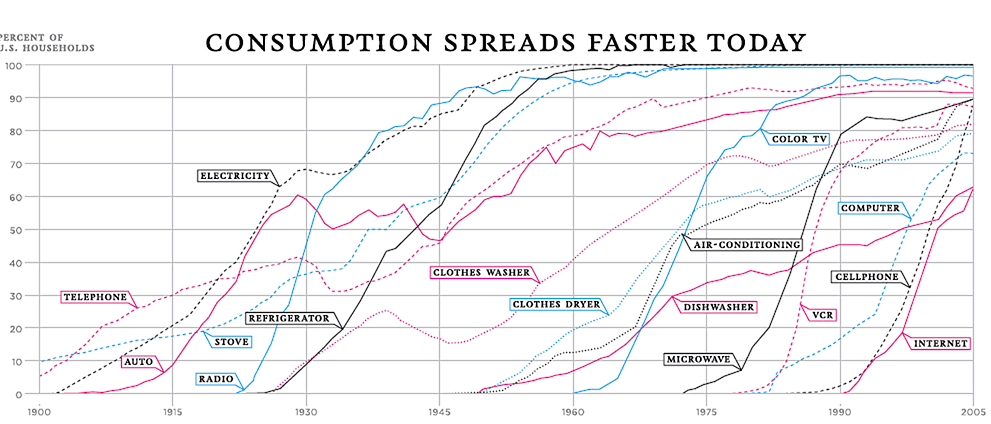Published on
Mapping the Trends on Our Doorstep: The Pace of Change Has Changed

This article has been adapted from a video presentation by Daniel Christian.
For many years now, I’ve been pulse-checking a variety of landscapes—scanning for emerging technologies, trends, and tools that are impacting institutions of higher education, K12, and the corporate world as well—and keeping track of them over time.
From those efforts, I’ve identified a few critically important trends and events that are now on our doorstep. These items urge us to forecast potential scenarios and then to develop our responses to those possible scenarios. The first point to make, though, is a critically important one: The pace of change has changed!
No longer are we on a slow, linear path of change that edges up ever so slightly over time. We are now on an exponential curve and trajectory of change.
Readers of my Learning Ecosystems blog will have heard me say this for some time now, but I’m not seeing nearly enough evidence that this phenomenon is being taken seriously. We aren’t giving these trends the attention that they deserve. There are major ramifications to these trends and each of us will be impacted by these trends in the future—count on it.
Perhaps it’s a blind spot for us. In fact, as a 2014 presentation from Sparks & Honey said, our blind spot comes from the fact that we have lived in a linear world. But today’s changes are exponential.
Evidence of the Shift to an Exponential Rate of Change
Well first of all, let’s consider a couple of graphs.
The first one is about the pace of adoption and shows a couple of different trajectories—the slow, linear trajectory shows what it looks like for something that will take ages to catch on, while the exponential curve above it shows that everybody will be using it tomorrow.
This second graph relays how—more and more—this has been the case as a variety of technologies have been adopted over the decades, and how the pace of adoption continues to accelerate. For example, back in the earlier portions of the 20th Century, it took a long while for the telephone, the automobile, electricity and the radio to catch on. But as time went by, things like the refrigerators, color TVs, computers, cellphones and the Internet were adopted faster and faster.
Besides these graphs, let’s consider how fast disruption can occur in the business world these days by looking at how two companies have completely disrupted their respective industries: Uber and AirBnB.
I recently spent a weekend in Evanston, IL visiting some of my friends from our college days at Northwestern. When it was time for all of us to head back home, two of my friends got out their smartphones, launched the Uber app, and proceeded to request a ride. We tracked the progress of the drivers to our location and they arrived within three minutes. I could go on about the power of the smartphones that enable this business to even exist, but that’s not my point here.
Having just started in 2012, Uber is already in 633 cities. And Uber’s competitor, Lyft, is now in approximately 300 cities and is moving into Canada to compete with Uber there.
Uber booked $20 billion in rides in 2016 and they’re said to have their eyes on the trucking industry – so we’ll have to keep any eye on what happens there.
Now, I’m not trying to sell Uber or Lyft’s services to anyone. My focus is on pointing out how quickly they changed the transportation industry.
In the hotel and lodging industry, AirBnB is having the same level of disruptive impact as Uber. AirBnB was founded in August of 2008 and has already served over 200 million guests, has over 3 million lodging listings in 65,000 cities and 191 countries! Incredible!
So change is happening very rapidly these days.
The Level of Change is Also Evolving
It isn’t just the pace of change that’s significant here. It’s the level of change that’s relevant as well.
Robotics, artificial intelligence, and automation continue to advance, impacting the workplace of today and tomorrow. The predictions regarding the percentages of jobs to be eliminated vary, but a recent report from Forrester predicts that AI-enabled automation will eliminate 9 percent of US jobs in 2018, while adding 2 percent of jobs in that particular space. This speaks to a 7 percent swing in the labor market in 2018 alone, and also speaks to a shift in the kinds of skills and competencies needed.
McKinsey also came out with a report that stated that automation may wipe out 1/3 of America’s workforce by 2030.
Regardless what the exact percentages turn out to be, we can be assured of at least a few things:
- Massive change is headed our way
- Many people will lose their jobs and will be forced to reinvent themselves—and to do so in a hurry
- For those who do keep their jobs, there’ll be massive needs for reskilling and training
- If you want to stay in the workforce, lifelong learning is now a requirement
So, the questions now become:
- How will this exponential pace of change impact higher education? K-12? The corporate world?
- What are the ramifications of this new pace of change for our students and for their futures? How can we best prepare them for this level of change?
- What are the ramifications of this new pace for us as faculty members and staff members and members of administrations?
- What curricula should we be offering?
- How can we become far more responsive to these changes and to this new pace of change?
The status quo won’t begin to cut it. Massive change is heading our way. And very soon.
What are we doing to get ready for this?
This article has been adapted from a video presentation by Daniel Christian.
Author Perspective: Analyst




